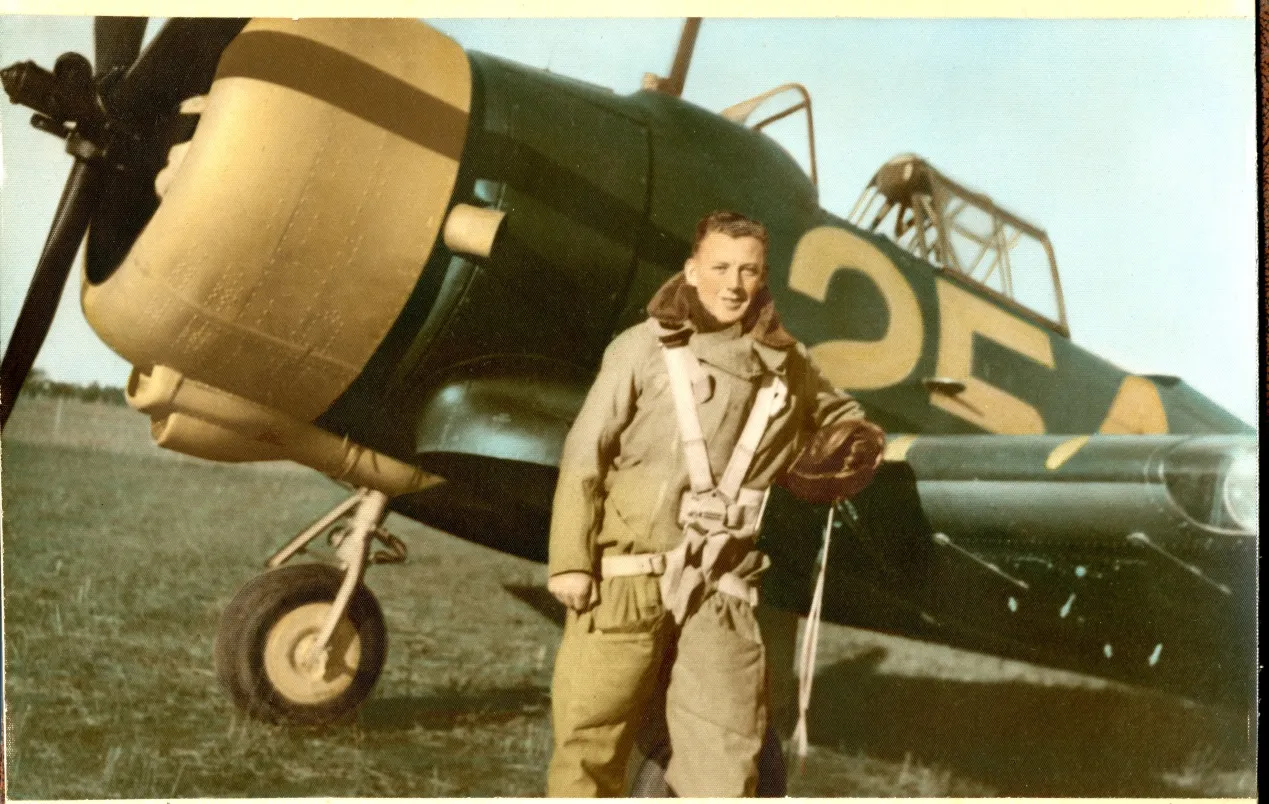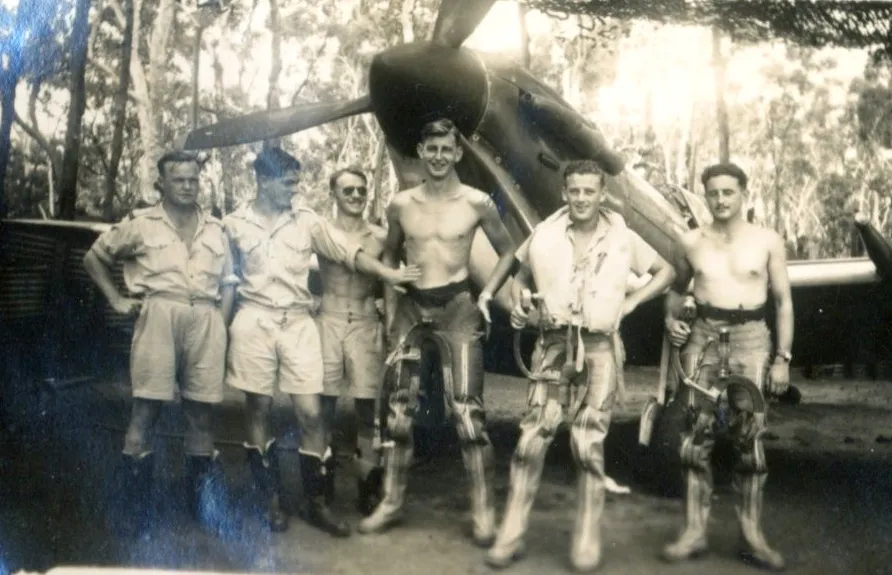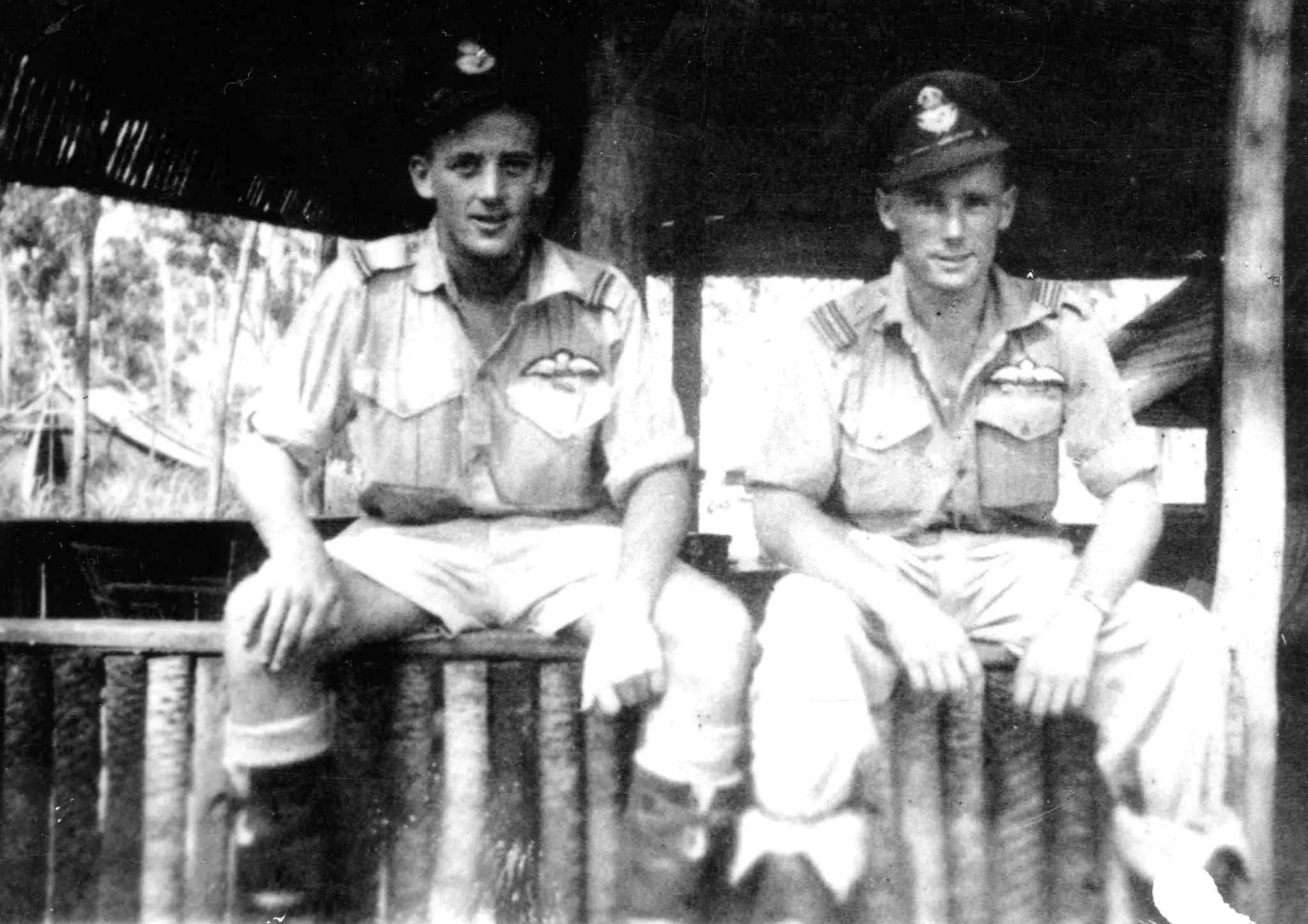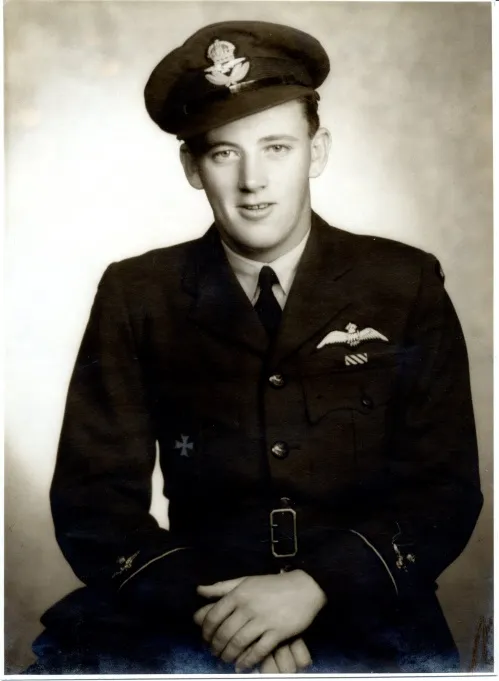FLTLT John Henry Eric Bisley 402720
DFC
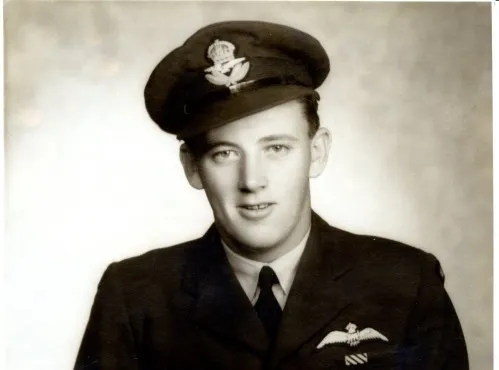


| Squadron/s | 452 SQN 122 SQN RAF 126 SQN RAF |
| Rank On Discharge/Death | Flight Lieutenant (FLTLT) |
| Nickname | Biz |
| Date of Birth | 07 May 1920 |
| Date of Enlistment | 14 Oct 1940 |
| Contributing Author/s | Our thanks to Biz's daughter, Margaret Bisley for the article and photographs. Reviewed June 2013 The Spitfire Associa |
John Henry Eric Bisley; his nick name was pronounced Biz, yet whether it was spelt with a “z” or an “s” is a moot point. Born 7th May 1920 in Molong NSW Bis named his mother, Janet, as next of kin when he joined up on the 14th October, 1940. On that day he first met his lifelong friend Ron Cundy at Bradfield Park, Sydney where they occupied adjoining beds in a 30 bed Nissan hut. After the Initial Training Course Bis went to Mascot for Elementary Flying Training School in December 1940, flying Tiger Moth, and in February 1941 to Service Flying Training School, Wagga, NSW where he trained on Wirraway. He achieved his Wings qualification on 31st March 1940, graduating as Sergeant Pilot.
After completing basic training in Australia Bis was posted to Britain in June 1941. He travelled to England via New Zealand, Fiji and Canada. After arriving in Vancouver he undertook a 7 day rail journey to Halifax, Nova Scotia, where he boarded an armed merchant cruiser, the Aurania, which was part of a 50 ship convoy travelling to England via Iceland. Near Iceland, in a “pea souper”, the Aurania hit an iceberg which crushed the ship’s hull and damaged the main mast and one of the engine shafts. This necessitated a return to Halifax and transfer to the Strathnaver which travelled direct to England – one of five passenger ships, with one battleship and seven destroyers as escort.
Bis underwent further training at 57 O.T.U., Hawarden near Chester, Wales, flying Miles Master, Dominie and Spitfire. He was then posted to 122 Squadron RAF at Catterick and Scorton flying Spitfire Mk 1, Mk 11A, Mk IIB and Mk VA & VB, and in January 1942 was attached for delivery flight from Grangemouth to Turnhouse, Scotland.
Bis was commissioned as Pilot Officer effective 15th January 1942.
Shortly afterwards, on 26th February 1942, Bis was posted to 126 Squadron RAF, Malta. Departing Glasgow on March 2nd 1942, he was one of 16 pilots who travelled to Gibraltar on merchant ship Queen Victoria with their spitfires in boxes. Of the 16 pilots there was one Australian, one Irishman and the rest English, American, Canadian and New Zealanders. At Gibraltar the pilots and their spitfires were transferred to the aircraft carrier HMS Eagle. On 29th March 1942 they flew off the carrier from point “x” Mediterranean for Malta. This involved flying a Spirfire Mk.VC, with long range tank (“belly tank”), from on board the HMS Eagle, which had a flight deck of only 660 feet. The limited flight deck required wooden wedges between the flap and the wing to enable takeoff, shortly after which the pilot had to lower the flaps fully to release the wedges and then close the flaps again. Under instructions this was a one-way flight and like almost all of these pilots Bis had no training in deck take offs.
Bis arrived in Malta at a time when Malta’s naval dockyards at Valetta and the airfields where he served, Luga and Takali (Ta’Qali), were under heavy air attack from Germany and Italy. On 5th April 1942 there was a raid on Grand Harbour, Valetta, involving 75+ bombers and 50+ 109s. Bis destroyed a Ju 87 and a Ju 88, attacked another Ju 88 and fought off eight Bf 109s before being wounded in the leg by cannon shell. With no ammunition left he dived to sea level in an attempt to throw off his pursuers. Although chased back to the coast he managed a crash landing at Takali airfield. Although his spitfire was not badly damaged, Bis spent 2 weeks in a military hospital Em’tarfa. On April 15th 1942, he was awarded the George Cross.
Next month, his Log Book records: May 7th 1942 was a “quiet day of work & preparation for a coming event – realized it was my 22nd at about 9 o’clock at night”. The coming event referred to was the arrival on May 9th of approximately 60 spitfires from USS Wasp and HMS Eagle, which through “wonderful organization” were made “serviceable in a matter of minutes”. The “old squadrons at Malta took them over at Takali, Hal Far and Luga for dawn till dusk readiness until the situation here [at Malta] is relieved.” This influx of support helped turn the tide in the protection of the island.
On 25th June 1942 he was presented with the DFC by Lord Gort and by the time he had left Malta he had brought his score to: 2 Me 109 F, 1 Ju 88, 1 Ju 87, 1 Macchi 202, 1 SM 84 and 1 Me 109 F probable. He had also experienced being shot at (unsuccessfully) by a Spitfire and amongst other combats, chasing 109s and 202s to Sicily and returning to Malta safely.
One of his friends in Malta, a fellow Australian with whom he had flown, was Pilot Officer Gordon Twedale who is buried at the Kalkara Cemetary. In November 1973 on a return visit to Malta Bis was able to place a wreath on his friend’s grave as part of a ceremony to honour Australian & New Zealand service people killed in Malta during WW2.
Following service in Malta, Bis was posted back to England but before long was recalled to Australia. He boarded the Dominion Monarch at Liverpool on 22nd August, with 4000 troops aboard, and arrived in Australia on 9th November, having travelled via Free Town, Cape Town and Bombay. He was posted to 452 Squadron RAAF, Bankstown before being transferred to Batchelor, then Strauss, Darwin for the defense against the Japanese threat. Out of Darwin, he destroyed a “Helen”, a Japanese twin engine Dinah bomber known as Nakajima K-149.
Back in NSW for seven days in July 1943 he participated in the G-suit trialing conducted by Professor Frank Cotton of the University of Sydney. G suits enabled pilots to conduct higher speed combat maneuvers without dimming of vision (grey-out) or loss of consciousness (black-out) due to G-forces.
At the end of July 1943 he was appointed Commander of B Flight in Darwin and at the end of his tour of duty with 452 squadron on 29th January 1944 his friend, Ron Cundy, took over as B Flight Commander.
After Darwin he was posted to 2AP Ferry Flight, Bankstown – as a test and ferry pilot he flew replacement aircraft to various locations in Queensland and Northern Territory. Subsequently he instructed at Central Flying School, Parkes, in No1 O.T.U. Instructors Course and then in 8 O.T.U. at Narromine and later at Parkes.
John Bisley was discharged from the RAAF on 26th September 1945 after almost five years of service. His Log Book records the following type of aircraft flown: Spitfire (I, IIA, IIB, VA, VB, VC, including long range), Wirraway, Boomerang, Dominie, Avro Trainer, Avro Ansen, Kittyhawk, Miles Master, Tiger Moth, Miles Magister, Beaufort and Hudson. He recorded over 1100 flying hours.
Before the war John worked as a clerk for the Commonwealth Bank at Bathurst. After returning to civilian life he worked for two trading companies before founding Bisley & Company Pty Limited, now an international trading company.
